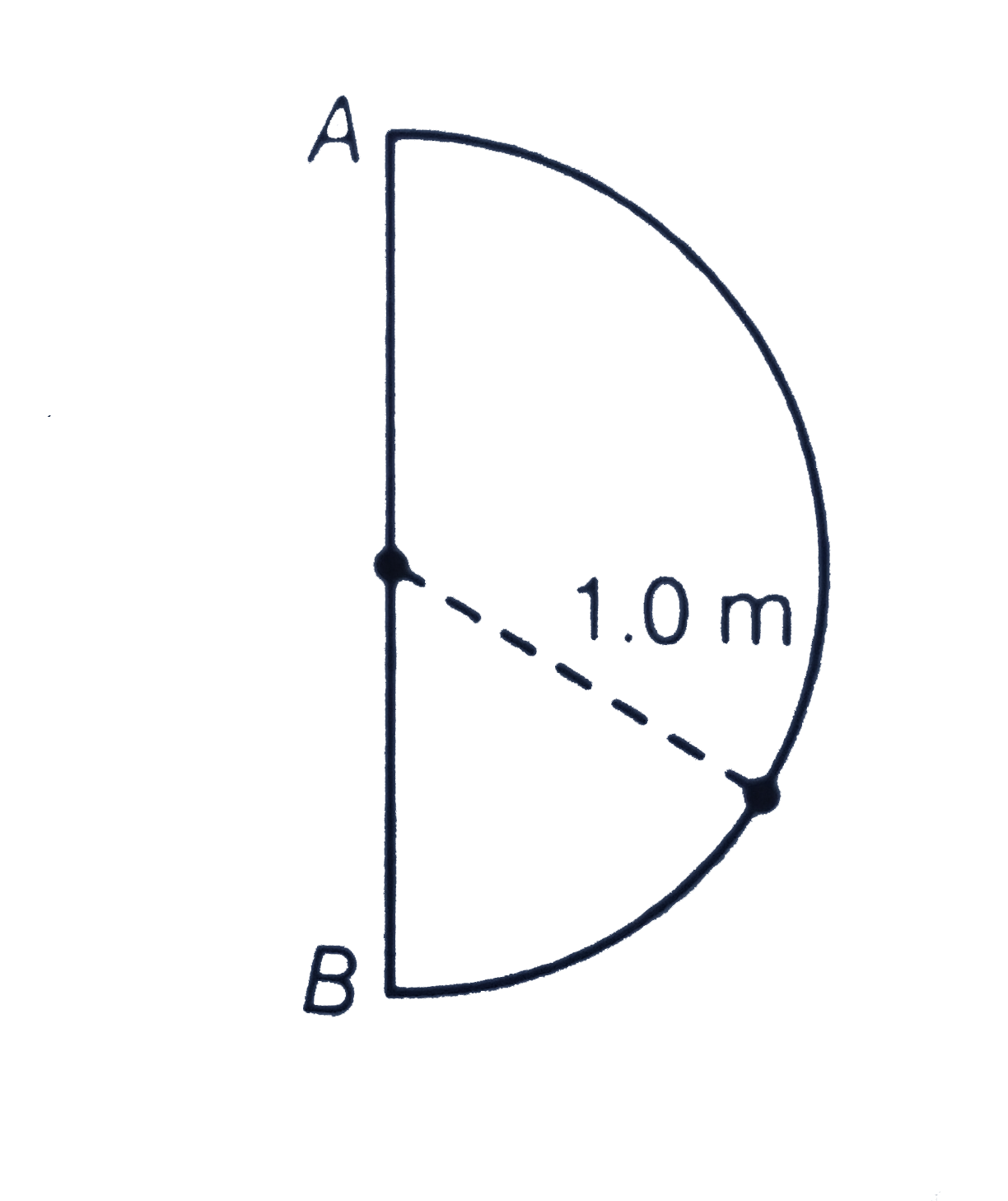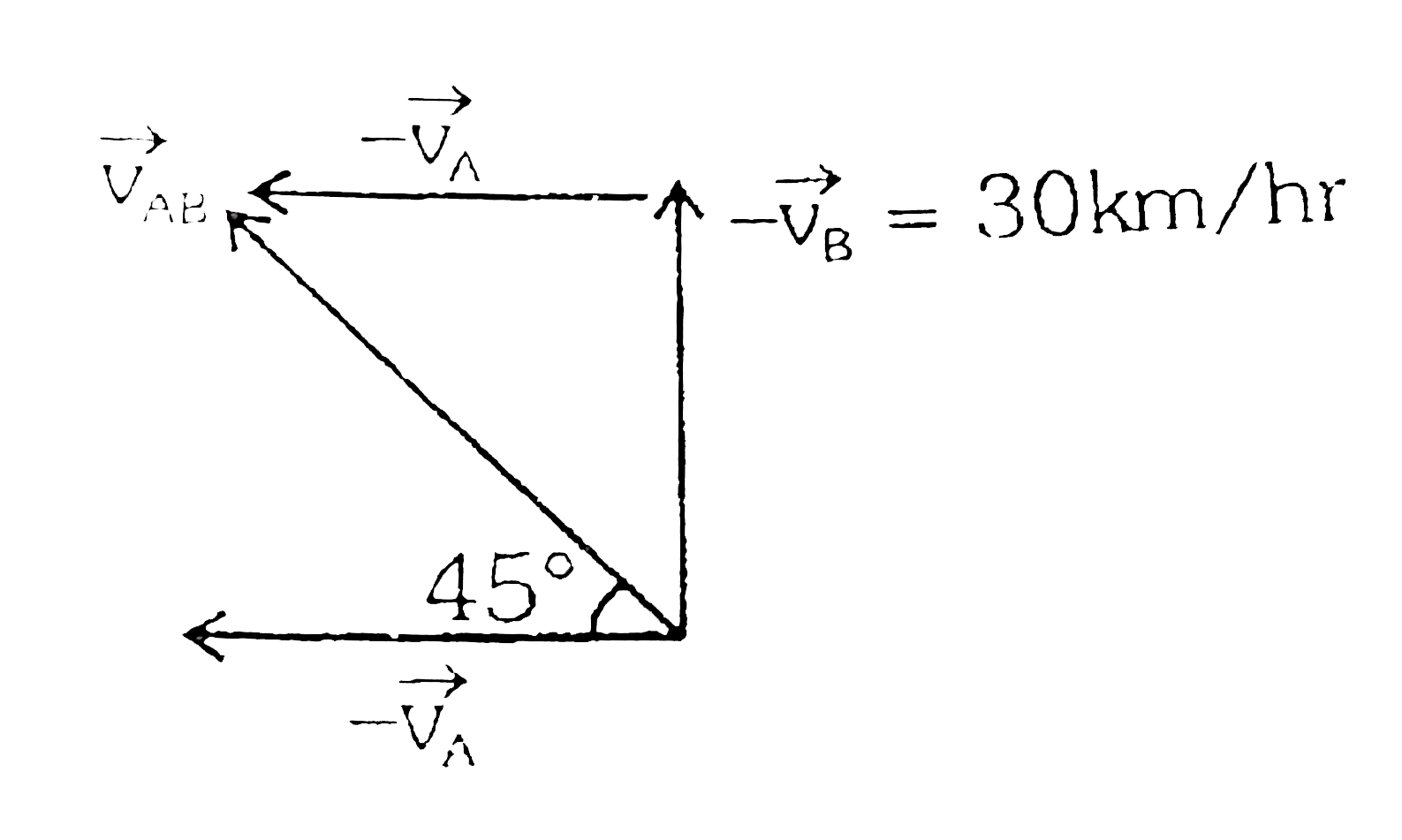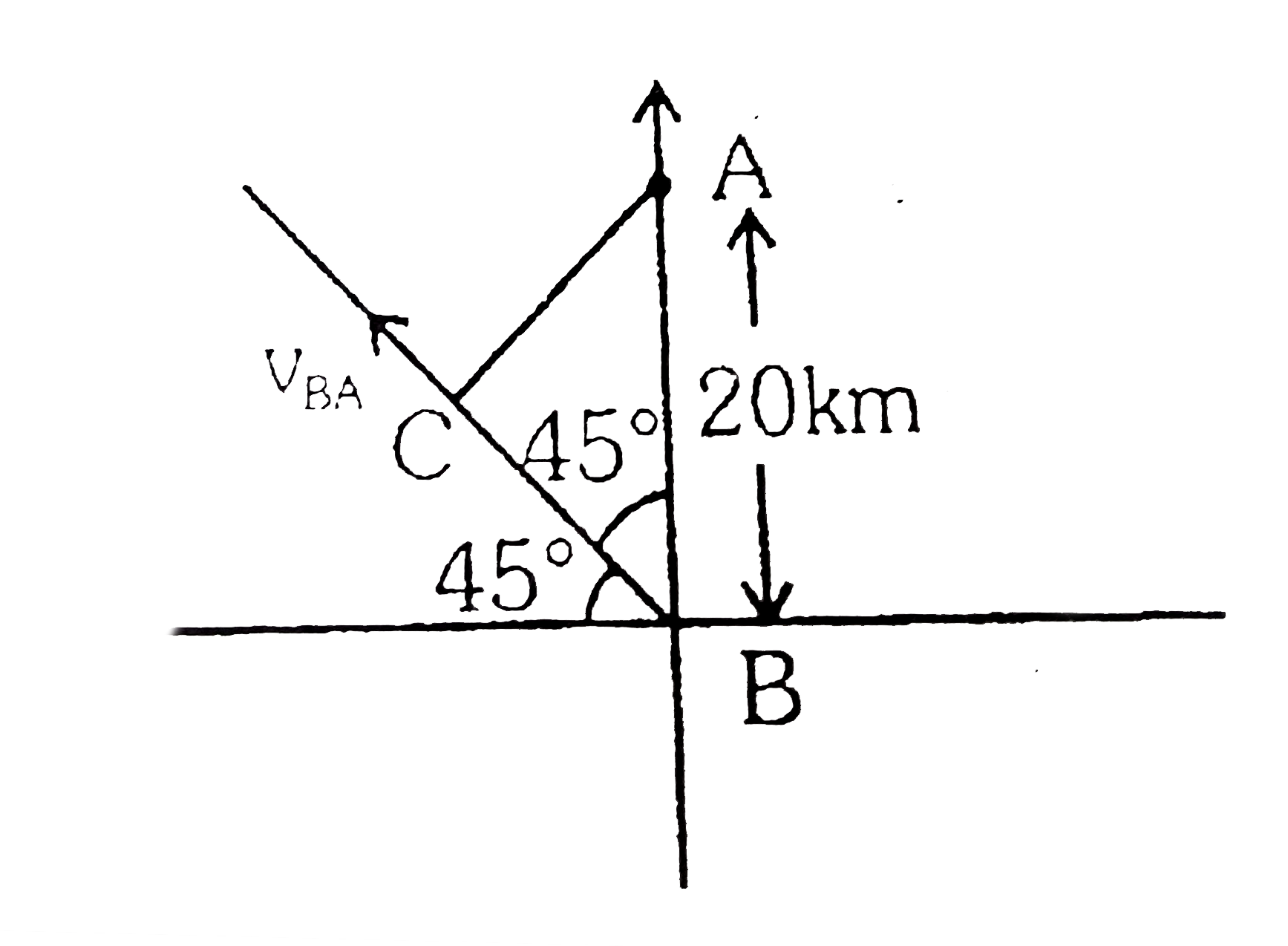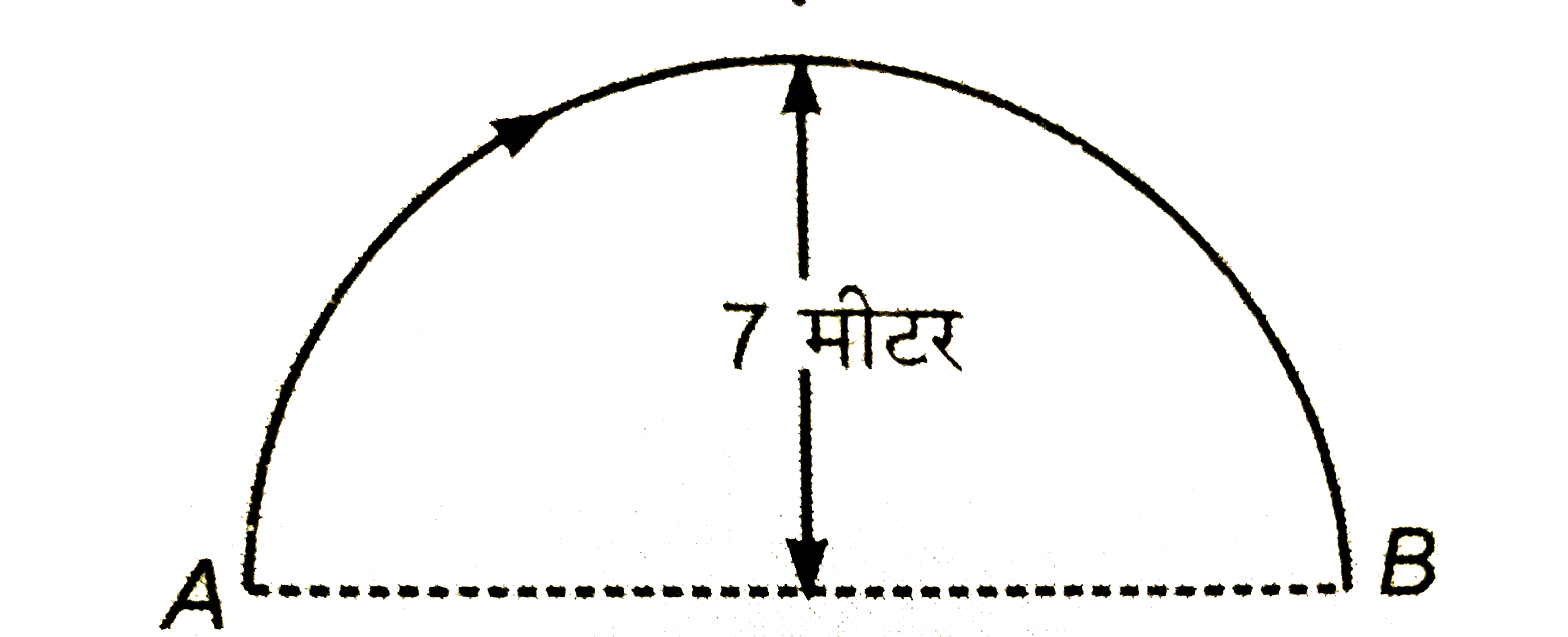In one second, a particle goes from point A to point B moving in a semicircle (Fig). Find the magnitude of the average velocity.
 Solution in Gujrati
Solution in Gujrati
Let we find →vAB
→vBA=→vB−→vA
30ˆj−30ˆi=30√2km/hr
From ΔACB
ACAB=sin45∘
AC=10√2km=BC
time t=BC(→vBA)=10√230√2=13 hrs.
t=20 min.

Alternative method:
After time t
A'B'l=√(20−30t)2+(30t)2
For lmin dldt=0
dldt=12√(20−30t)2+(30t)2×[2(20−30t)×−30+1800t]=0
−(20−30t)+30t=0
60t−20
t=13 hrs.
Now lmin=√(20−30×13)2+(30×13)2=10√2km

Topper's Solved these Questions
- MOTION IN A PALNEBOOK - ALLEN CHAPTER - MOTION IN A PALNEEXERCISE - EXERCISE-02
37 Videos
- MOTION IN A PALNEBOOK - ALLEN CHAPTER - MOTION IN A PALNEEXERCISE - EXERCISE-03
6 Videos
- KINEMATICS-2DBOOK - ALLEN CHAPTER - KINEMATICS-2DEXERCISE - Exercise (O-2)
47 Videos
- NEWTON'S LAWS OF MOTION & FRICTIONBOOK - ALLEN CHAPTER - NEWTON'S LAWS OF MOTION & FRICTIONEXERCISE - EXERCISE (JA)
4 Videos
Similar Questions
The distance x of a particle moving in one dimensions, under the action of a constant force is related to time t by the equation, t=√x+3, where x is in metres and t in seconds. Find the displacement of the particle when its velocity is zero.
View SolutionA point traversed half the distance with a velocity v0. The remaining part of the distance was covered with velocity v1 for half the time, and with velocity v2 for the other half of the time. Find the mean velocity of the point averaged over the whole time of the motion.
View SolutionA particle is moving in xy-plane .At certain instant the components of its velocity and acceleration are as follows ux=3m/s,uy=4m/s,ax=2m/s2anday=1m/s2. The rate of change of speed at this moment is
View SolutionA piece of wire is bent in the shape of a parabola y=kx2 (y-axis vertical) with a bead of mass m on it. The bead can slide on the wire without friction. It stays at the lowest point of the parabola when the wire is at rest. The wire is now accelerated parallel to the x-axis with a constant acceleration a. The distance of the new equilibrium position of the bead, where the bead can stay at rest with respect to the wire, from the y-axis is:
View SolutionIn 1.0s, a particle goes from point A to point B , moving in a semicircle of radius 1.0m (see figure ). The magnitude of the average velocity

View SolutionIn one second, a particle goes from point A to point B moving in a semicircle (Fig). Find the magnitude of the average velocity.
View SolutionA particle goes from point A to point B, moving in a semicircle of radius 1 m in 1 second. Find the magnitude of its average velocity.
View Solutionएक कण 7 मीटर त्रिज्या के अर्धवृत पर बिंदु A से बिंदु B तक 10 सेकण्ड में पहुंचता है कण की औसत चाल तथा इसका औसत वेग ज्ञात कीजिय ।

View SolutionIn 1 s, a particle goes from poitn A to point B, moving in a semicircle of radius 1 m. The magnitude of the average velocity of the particle is
View SolutionIn one second, a particle goes from point A to point B moving in a semicircle (Fig). Find the magnitude of the average velocity.

View Solutionएक कण अर्धवृत के अनुदिश बिंदु A से B तक 1.0 सेकंड में चित्रानुसार पहुँचता है। कण के औसत वेग का परिमाण है।
(##ARH_HIN_41Y_JEE_PHY_SP_C02_E01_006_Q01.png" width="80%">
View Solutionएक कण बिंदु A से 1.0 m त्रिज्या के अर्द्धवृत पर चलता हुआ 1.0s में बिंदु B पर पहुँचता है (जैसा कि चित्र में प्रदर्शित है):

औसत वेग का परिणाम होगा
View SolutionA particle moves from point A to B in 1 second while moving on a semicircle of radius 1m. Find the magnitude of the average velocity.
View SolutionA particle moves on a path as shown. The particle takes 10 seconds in going from starting point to the final point. What is the average velocity vector of the particle ?

View SolutionIn one second, a particle goes from point A to point B moving in a semicircle (Fig). Find the magnitude of the average velocity.

View SolutionIn 1.0s, a particle goes from point A to point B , moving in a semicircle of radius 1.0m (see figure ). The magnitude of the average velocity

View Solution
